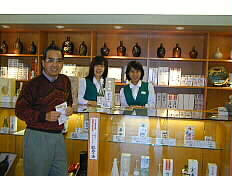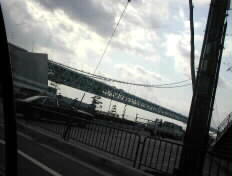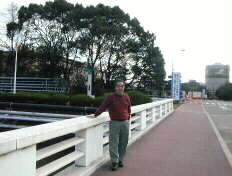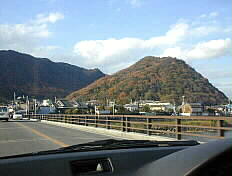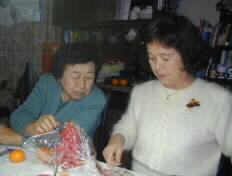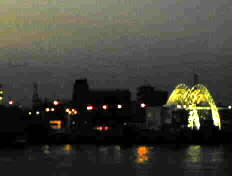
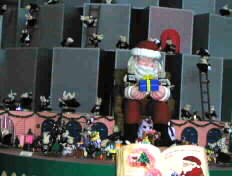
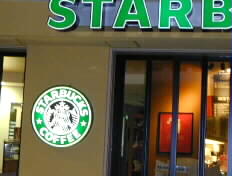
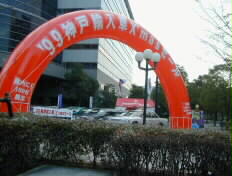
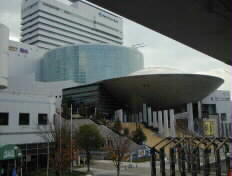
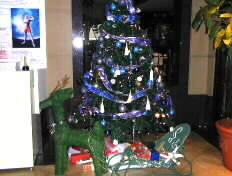
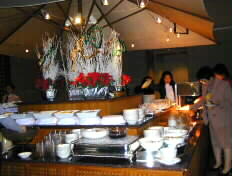
Finally, we found the entrance to the hotel. A pretty decoration of Christmas tree welcomed us. We took breakfast at the garden coffee shop on the first floor by looking the outside street.
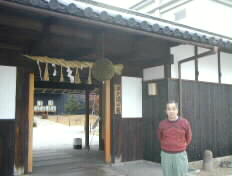
This is "Sake Spirit House of Kobe" in Mikage district.
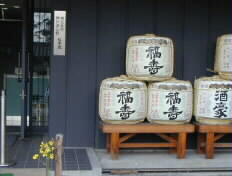
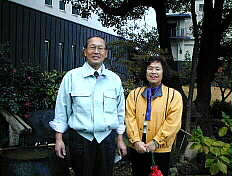
He explains "The Fukuju brewery dates back to 1751, with a long tradition handed down for 248 years. Cold downblow from Rokko mountain range in winter, the most suitable rice for making sake, pure underground water called Holly Water, and ideal ports for delivery have been producing famous brands called Nada in general.
Great Hanshin Earthquake in 1993 hit the area, giving deathblows to the sake plant. We have finally recovered from the devastation today."
Sake Spirit House of Kobe: PO 658-0044 1-8-17 Mikage Tsukamachi Higashinada ward, Kobe City, Japan
phone:078-841-1121
phone:078-841-1121
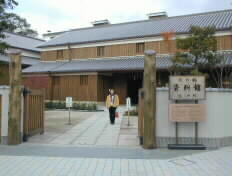
making sake is one of the valuable cultures in Japan. The museum intends to hand down the history of sake brewing to the generations to come. There are many old exhibits of documents and tools for sake making since Edo era.
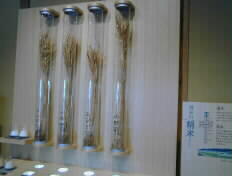
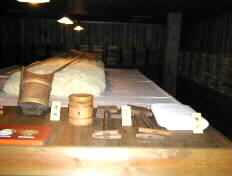
On the left are the samples of rice plant: the rightmost rice is called Yamada-nishiki, the king of sake-rices. Right picture is a reproduction of the fermentation room, including many tools.
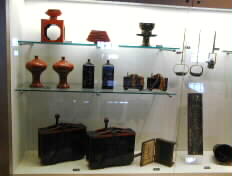
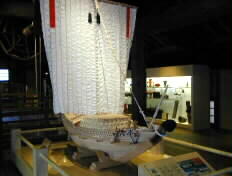
A lot of beautiful lacquered sake cups was displayed like this. Right picture shows a miniature of sake transportation boat called "Taru Kaisen." Sake produced in Nada was transported to Edo (today's Tokyo) in 5-7 days by the boats. During the sale, sake became more mild and tasty. In this way, Nada sake became very famous in Japan.
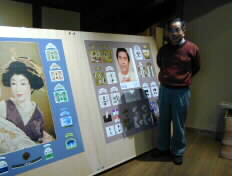
This corner exhibits the samples of old and new posters.
In the adjacent souvenir shop sells many kind of sake. I bought one of it for my father. The brewer, Sawa-no-Tsuru, was founded in 1717 as described before. As the Chinese characters of "Sawa" and "no" in traditional style were so difficult to read for young people, they were changed to simpler letters with the same meanings in 1991.
Sawa-no-Tsuru museum
PO 657-0852
1-29-1 Oishi Minamimachi Nada ward Kobe City, Japan
phone 078-882-7788
http://www.sawanotsuru.co.jp
PO 657-0852
1-29-1 Oishi Minamimachi Nada ward Kobe City, Japan
phone 078-882-7788
http://www.sawanotsuru.co.jp
